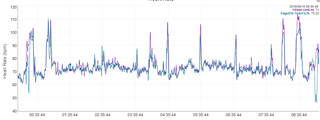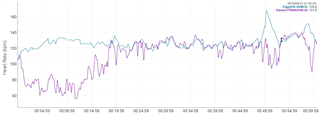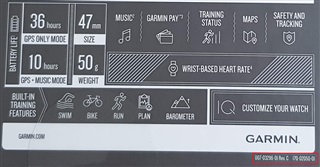I set out to try and figure out/prove that the OHR for me is very inaccurate when the FR945 is not actively recording an activity. I usually bike indoors and outdoors using a Edge 830 where I record the activity. With the TrueUp feature I get updated Training Status, VO2Max, Recovery Time etc on both my Edge 830 and FR945. But the Edge 830 does not support Intensity Minutes or Body Battery, so when I record a biking activity using Edge 830, the FR945 uses its OHR to update these metrics. The FR945 OHR in my case is reading way too low.
The first two tests proves that in my case, the FR945 OHR can be quite reliable, as long as the FR945 is actively recording.
Here is a 9 hour recording comparing the FR945 OHR during a day at the office with some walks. Comparing against a Wahoo Tickr Fit recorded on Edge 830. I'm satisfied with this result

Link to full analysis: https://analyze.dcrainmaker.com/#/public/2d3bb0a4-fed9-4cf4-643c-7615ff39bb70
Here is a 1 hour indoor bike ride recording comparing FR945 OHR vs a Garmin HRM-Dual recorded on Edge 830. Again very good results.

Link to full analysis: https://analyze.dcrainmaker.com/#/public/cea91f7e-270a-40d4-7fc4-4c5dda687ef5
Now, if the FR945 is not actively recording, that's when I have issues. Here is a 1 hour indoor ride, where the FR945 is set to broadcast HR and not recording any activity. I'm recording the broadcasted HR on a Wahoo device and comparing against HRM-Dual recorded on Edge 830.
The first 20 minutes are just way off. The FR945 seems to think I'm resting. Eventually it seems to catch up, but then I did a hard sprint at minute 50, and the FR945 missed this completely. It even thinks my HR went down during the sprint.

Link to full analysis: https://analyze.dcrainmaker.com/#/public/be8daf1f-205c-4170-48b4-fa96e622a5db
It seems to me like the OHR on the FR945 is in some kind of low-power mode when the device is not actively recording, this makes me question all the features like Body Battery, Stress and Intensity minutes.
When the device is recording however, the OHR seems quite accurate.



